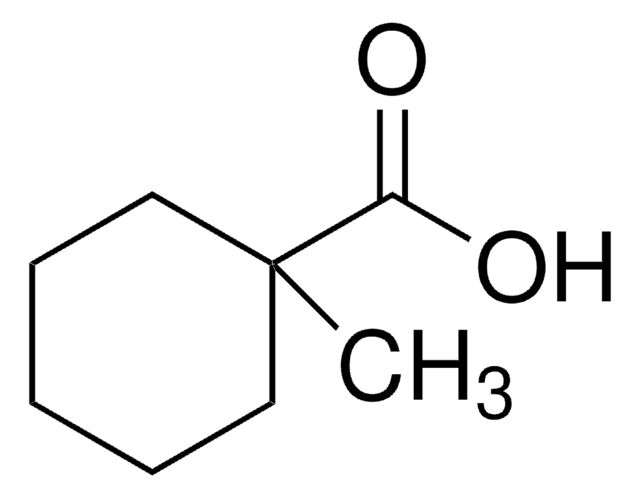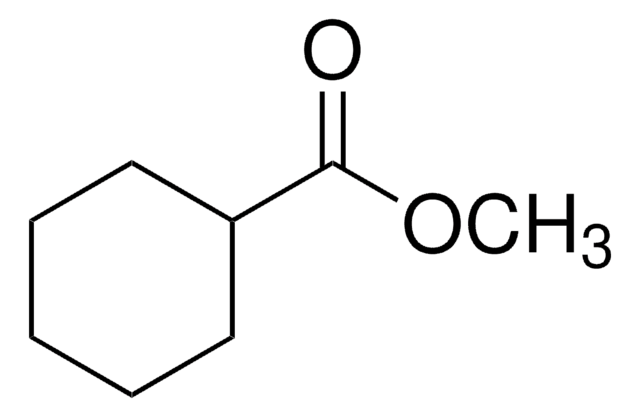C104507
Cyclohexaneacetic acid
≥99%
Synonim(y):
Cyclohexylacetic acid
About This Item
Polecane produkty
Próba
≥99%
Postać
solid
współczynnik refrakcji
n20/D 1.463 (lit.)
tw
242-244 °C (lit.)
mp
28-32 °C (lit.)
gęstość
1.007 g/mL at 25 °C (lit.)
ciąg SMILES
OC(=O)CC1CCCCC1
InChI
1S/C8H14O2/c9-8(10)6-7-4-2-1-3-5-7/h7H,1-6H2,(H,9,10)
Klucz InChI
LJOODBDWMQKMFB-UHFFFAOYSA-N
Szukasz podobnych produktów? Odwiedź Przewodnik dotyczący porównywania produktów
Hasło ostrzegawcze
Warning
Zwroty wskazujące rodzaj zagrożenia
Zwroty wskazujące środki ostrożności
Klasyfikacja zagrożeń
Eye Irrit. 2 - Skin Irrit. 2 - STOT SE 3
Organy docelowe
Respiratory system
Kod klasy składowania
11 - Combustible Solids
Klasa zagrożenia wodnego (WGK)
WGK 3
Temperatura zapłonu (°F)
235.4 °F - closed cup
Temperatura zapłonu (°C)
113 °C - closed cup
Środki ochrony indywidualnej
dust mask type N95 (US), Eyeshields, Gloves
Certyfikaty analizy (CoA)
Poszukaj Certyfikaty analizy (CoA), wpisując numer partii/serii produktów. Numery serii i partii można znaleźć na etykiecie produktu po słowach „seria” lub „partia”.
Masz już ten produkt?
Dokumenty związane z niedawno zakupionymi produktami zostały zamieszczone w Bibliotece dokumentów.
Nasz zespół naukowców ma doświadczenie we wszystkich obszarach badań, w tym w naukach przyrodniczych, materiałoznawstwie, syntezie chemicznej, chromatografii, analityce i wielu innych dziedzinach.
Skontaktuj się z zespołem ds. pomocy technicznej









